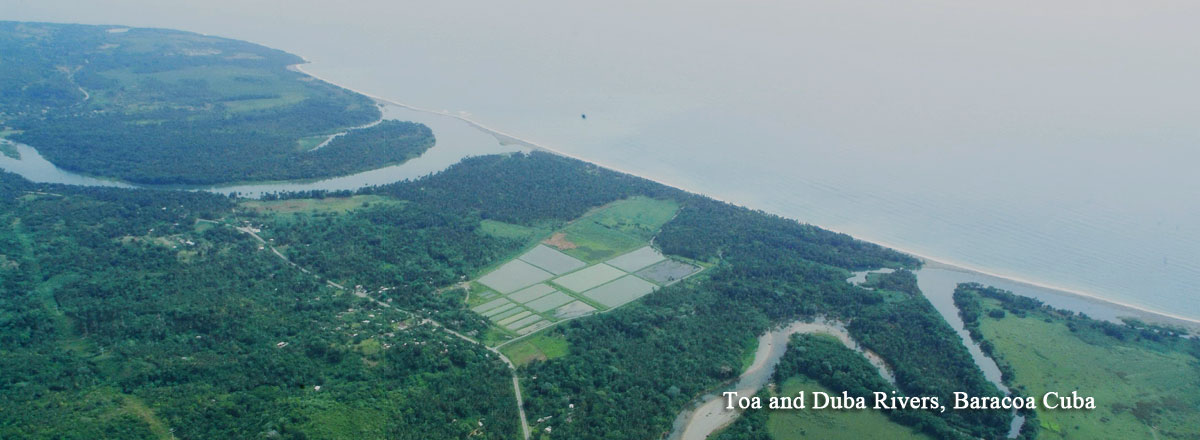Baracoa is located in the easternmost part of the island, north of Guantanamo. During the 16th and 17th centuries while it was still without communication with the rest of the island by land, the scarce population traded illegally with the French and English. In the early 19th century a number of French settlers installed in the villa that had fled the Haitian Revolution were dedicated to coffee and cocoa cultivation. That is how the French influence reached the region.
Spanish domination left its imprints in the city’s architecture, its historic center declared National Monument, maintains the original urban design and the wood architecture is unique. Among the most important fortifications are: El Castillo y La Punta and the large fortified towers of Joa and Cementerio.
With a predominately peculiar and mountainous landscape, Baracoa is proud of its enchantments, where the sea, mountains covered with thick leaves and its abundant rivers, conforms an attractive natural scenery with historic and cultural characteristics that will cultivate the attention of any visitor.
With the access by La Farola road, which surrounds the mountains constitutes only part of its multiple attractions, making Baracoa one of Cuba’s most beautiful attractions per excellence. This road includes 11 hanging bridges and its highest point called Altos de Cotila over 600 meters above sea level.
In the heart of the Nipe-Sagua-Baracoa mountainous groups, you can find the Alejandro de Humbolt National Park with some 70 000 hectares. This part is of great ecological importance where close to 1000 flora species are found, the third part of those reported in Cuba, many unique in the region and representative of the forrests of the Caribbean region where in addition many species endemic to Cuba are found.
Things to do
Attractions
- ✓ Maguana Beach
- ✓ El Yunque
- ✓ Casa de la Trova
- ✓ Catedral de Nuestra Senora de la Asuncion
- ✓ Museo Arqueologico la Cueva Del Paraiso
- ✓ Museo Municipal del Fuerte Matachin
- ✓ Playa Blanca
- ✓ Parque Independencia
- ✓ Casa del Chocolate
Attractions
- ✓ Matachín Fortress.
- ✓ Seboruco de Santa Barbara Castle.
- ✓ La Punta Fortress.
- ✓ Combate de Alto Pino.
- ✓ Oscura Cave.
- ✓ The first Malecon del Caribe.
- ✓ La Farola Road.
- ✓ Toa River.
- ✓ Duaba River.
- ✓ Miel River
- ✓ Yumuri River
Yunque de Baracoa

Another of the natural attractions that will surprise you is the Yunque, a 560 meter mountain in form of a plateau. Its name was given due to the vertical form of its walls and the top side is flat. It is possible to climb the mountain.
You can row in the Miel, Duaba, Yumuri and Toa Rivers in a cayuca, which is a typical vessel of the area, or you can enjoy the sun in the Maguana, Saratoga or Duaba beaches.
Restaurants
- ✓ Maguana Beach Bar Restaurant
- ✓ Costa Norte
- ✓ Restaurant Don Pedro
- ✓ Dorado Cafe
- ✓ La Musa de Piedra
- ✓ Baracoando
- ✓ Restaurant Fuerte de la Punta
- ✓ Restaurante Calalu
- ✓ Restaurante El Boulevard
- ✓ La Cacha Pizzeria Restaurante
- ✓ La Casona
- ✓ El Parque



